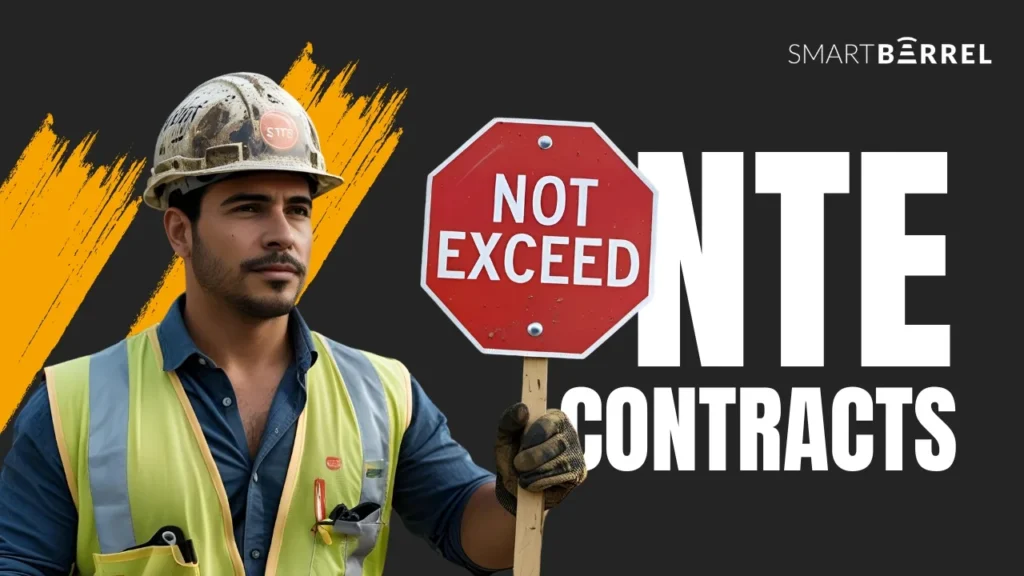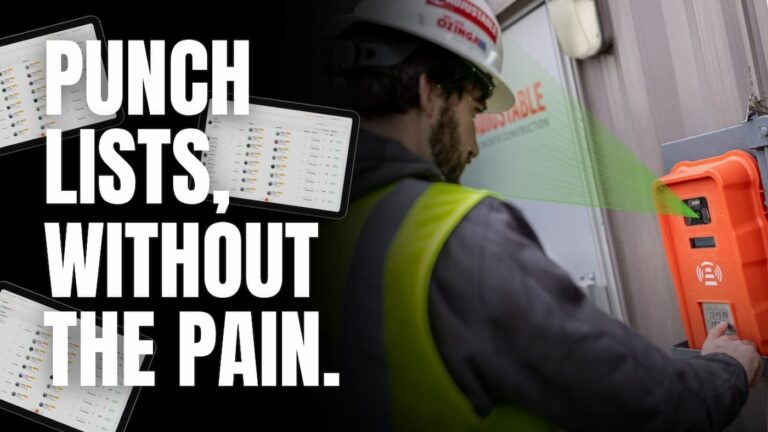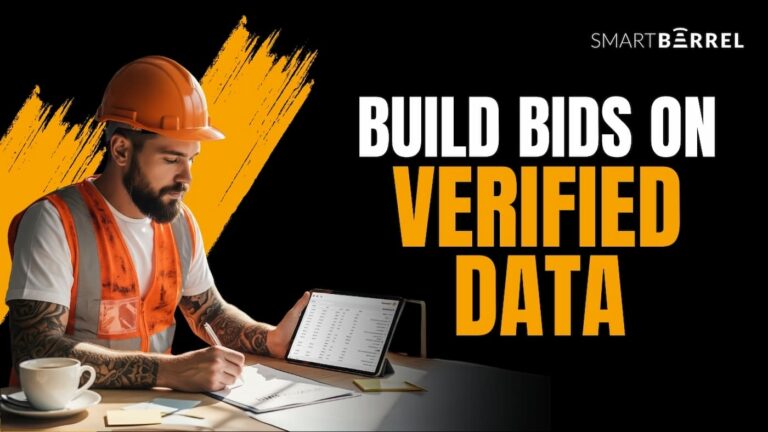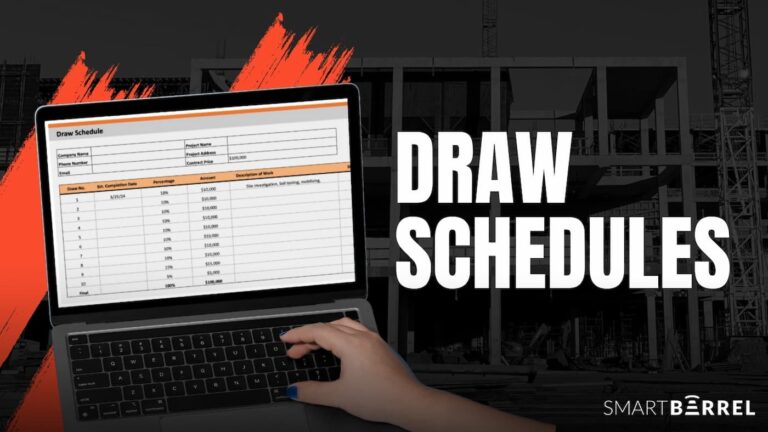Contractors lose money fast when projects slip out of control. One surprise, one delay, and your profits go away. It’s a well-known fact. Cost control is one of the biggest issues in construction projects. In fact, a McKinsey study shows that large projects typically take around 20% longer to finish than scheduled and are up to 80% over budget.
Time and materials not-to-exceed contracts are preferred due to flexibility. They are used when the exact nature and extent of the job is not defined in advance. However, with such flexibility, there are some disadvantages.
One of them is easily escalating costs. That is where the not-to-exceed (NTE) clause comes in handy. This clause puts a strict limit on spending. It keeps the budget stable while still allowing for changes.
This guide provides you with information on what is a time and materials not-to-exceed contract. It explains why you should care about them and shows how to use them appropriately.
Understanding Time and Materials Contracts
Time and materials contracts let contractors bill for actual labor and materials used. They work well when a project is open-ended or likely to change. Think of a renovation. Sometimes, hidden damage is uncovered. Instead of waiting for new approvals, the contractor can fix the issue right away. That speeds up the work. But with no fixed price, there’s a risk. Costs may go up too fast. Clients may feel surprised or even misled.
This is why adding a not-to-exceed clause is smart. It sets a top limit for spending. It keeps the project flexible. This brings structure to an otherwise fluid setup.
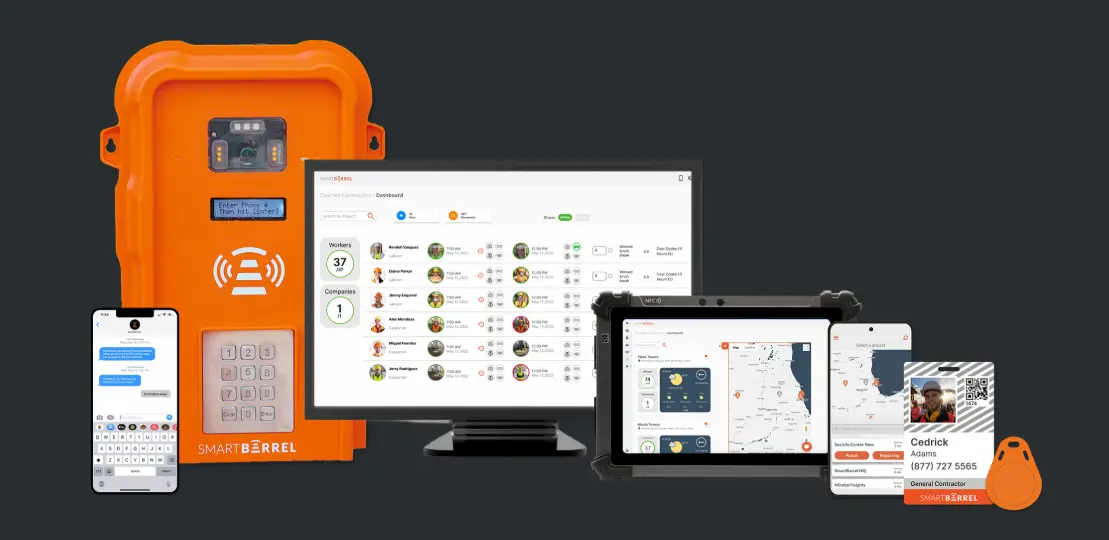
What Is a Not-to-Exceed Clause?
A not-to-exceed clause is a clause that limits the amount a contractor can charge. It makes sure costs do not go beyond this figure. If they do, the client doesn’t have to pay more. That gives the client peace of mind. It makes budgeting easier. It also acts like a fixed-price contract in some ways.
But unlike fixed contracts, the T&M not-to-exceed contract still allows room for changes. If surprises pop up, the contractor can act. They can do so as long as the work stays under the NTE amount. If not, the two sides must talk and decide what to do next. This can mean a change order. It can also mean a new agreement. Either way, it stops confusion and protects both sides.
Take Back Control of Your Time Keeping
Benefits of T&M Not-to-Exceed Contracts
For Clients
Cost Control:
An NTE clause sets a firm spending limit. Clients know exactly how much they might spend. This helps them plan their budget better. Even if issues come up, costs won’t go past the agreed NTE amount. That removes a lot of stress. It also cuts the risk of the job.
Transparency
These contracts give detailed records. They show labor and material costs. Clients can see what they’re paying for in real-time. That builds trust. It helps catch errors early. It prevents overbilling. When everything is clear, clients feel more secure.
Flexibility
Projects often change. With T&M not-to-exceed contracts, updates can be made. There’s no need to rewrite the entire agreement. If new work fits within the NTE budget, the contractor can move forward. That makes things more efficient. It also avoids delays.
For Contractors
Clear Expectations
When the budget is capped, contractors can plan better. They know how much they can spend. They can allocate resources wisely. It helps avoid over-promising or under-delivering. Everyone knows what’s expected.
Prompt Payments
Most of these contracts use milestone-based billing. That means payments are tied to specific stages of the project. Clients are more likely to approve invoices quickly. They already know the maximum cost. This keeps the contractor’s cash flow steady.
Enhanced Reputation
Staying within budget builds trust. Clients are more likely to return. They may recommend contractors who respect financial limits. It shows the contractor is dependable. It proves they are experienced. That’s valuable in any competitive market.
Challenges of T&M Not-to-Exceed Contracts
Scope Creep
Scope creep happens when new tasks are added without formal approval in an NTE contract, which eats into the set budget fast. Contractors may end up doing extra work for free. To avoid this, make sure all changes go through a proper process. Write them down. Get them approved before starting the work. Also, schedule regular check-ins. Use them to review the scope. That stops problems before they grow.
Disputes Over Costs
Sometimes, clients and contractors disagree on what should be billed. A client might think a task wasn’t needed. The contractor might say it was essential. To avoid fights, keep clear and detailed records. Track every expense. Stay in touch throughout the job. Don’t wait until the invoice arrives to talk about costs. Frequent updates help everyone stay aligned.
Contractor Risk
If the total cost goes over the not-to-exceed amount, the contractor pays the difference. That’s a big risk. Sometimes, it’s not even the contractor’s fault. To reduce this risk, contractors should evaluate the job carefully before starting. Build a small cushion into the T&M NTE cap for surprises. Also, consider adding a clause that allows for contract changes if major issues arise. This keeps everyone protected.
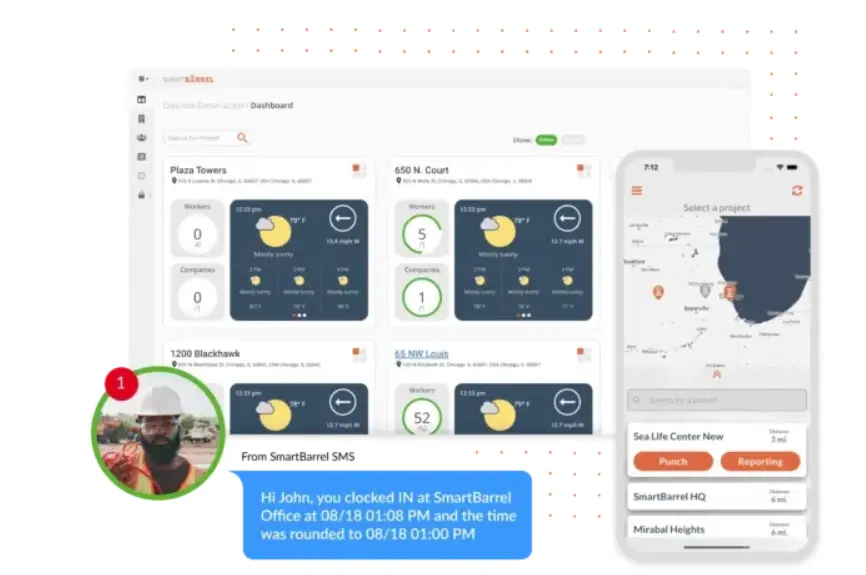
Take Back Control of Your Time Keeping
Negotiation Tips: Getting Both Sides to Agree on the NTE
Reaching a fair agreement on the time and materials not-to-exceed amount can be tricky. Clients want cost control. Contractors want enough room to work without losses. That’s why clear, open, and honest negotiation is key.
Here’s how both parties can work toward a balanced deal that protects everyone:
- Start with Clear Numbers: Use past data or expert estimates to back your proposal. Don’t guess. Show the client how you calculated the NTE quote. Break it down based on labor hours, material costs, and potential risks.
- Add a Reasonable Contingency: Contractors should include a small buffer within the time and materials not-to-exceed cap. This helps absorb unexpected costs. It does so without breaking the agreement. Make sure the client knows the buffer is there. It’s meant for shared protection.
- Define What’s Included and What’s Not: Be specific about what work is covered under the not-to-exceed contract. Also, mention what’s excluded. Examples include unknown underground utilities or client-caused delays. This prevents disputes later.
- Use Milestones as Checkpoints: Don’t wait until the end of the job. Build in budget reviews at key phases of the project. This gives both sides a chance to talk about progress. It helps everyone stay updated before hitting the cap.
- Put the Process for Going Over Budget in Writing: If costs might go over the NTE amount, how should it be handled? Define the steps clearly. Will it trigger a change order? A pause in work? A joint review? Write all of this in the contract.
- Keep Emotions Out of the Room: These talks can get tense. Stay focused on the numbers. Focus also on the scope and the project goals. The more calm and professional the conversation, the easier it is to build trust.
- Always Get It in Writing: Verbal agreements fade. Formalize every part of the not-to-exceed pricing structure. Include the dollar amount and the dispute resolution process. Make sure both sides sign it. Both parties must fully understand it.
Best Practices for Managing Time and Materials Not-to-Exceed Projects
Detailed Documentation
Write down every labor hour. List every material used. Document each task done. These records should be accurate. They should also be up-to-date. This protects both sides. Use digital tools to keep things organized. The more information available, the easier it is to explain costs if needed.
Regular Communication
Check in often. Talk about where the project stands. Go over any delays. Discuss extra work or changes. Clients appreciate being in the loop. It builds trust and stops small issues from becoming big problems.
Use of Technology
Today’s software can help. These tools track hours, materials, and budgets in real-time. Platforms like Procore, Planyard, PowerPlay, and SmartBarrel offer these features. They make it easier to stay on budget. They also help contractors respond faster. Especially when things start to go off track.
Legal Review
Always get contracts reviewed by a lawyer. Make sure the language is clear. Ensure it protects both parties. Avoid vague terms. Every clause should be easy to understand. That way, there’s less chance of disputes later.
Take Back Control of Your Time Keeping
T&M vs. T&M Not-to-Exceed vs. Lump Sum: When to Use Each
- T&M Contracts: These are best when the project scope isn’t fully known. They allow work to move forward without delay. If you expect surprises or frequent changes, this is the way to go. But they need tight oversight. Otherwise, you could run into budget issues.
- T&M Not-to-Exceed Contracts: This type is ideal when the client wants cost control. At the same time, it still allows some flexibility. It’s a good fit for projects with some unknowns. But it also works when there’s a firm budget. The time and material not-to-exceed cap keeps things from getting out of hand. It still allows progress to continue.
- Lump Sum Contracts: These work best when the job is clearly defined from start to finish. The contractor gives a total price upfront. That gives the client full financial clarity. But if anything changes, new agreements are usually needed. That can slow things down.
Conclusion
Adding not-to-exceed clauses to time and materials not-to-exceed contracts is a smart move. It helps balance flexibility and cost control. It’s helpful for clients and contractors alike. Clients know what they’re spending. Contractors know their limits. The key is to set expectations early. Keep records clear. Communicate often. With the right approach, you can avoid headaches. You can also deliver a successful project.
At SmartBarrel, we know how hard it is to manage labor, costs, and time. SmartBarrel helps you track verified labor hours, document field activity, and generate detailed logs so you always know where you stand against your NTE budget. With cost-coded hours, photo-verified time entries, and automated reports, it’s easier to avoid overages and bill confidently.
Ready to take control and eliminate costly surprises? Book a demo with SmartBarrel now and experience the difference firsthand.

